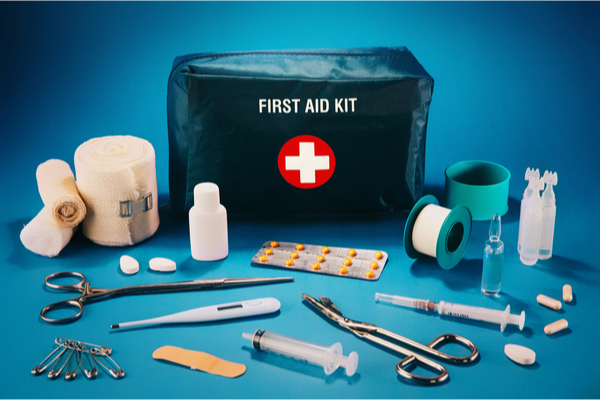If someone in your home got sick or injured today, or if there was a natural disaster (knock on wood), would you have everything you need to care for yourself and the other members of your household? Don’t wait until you need them to stock your home first-aid kits. If you haven’t gotten around to putting your emergency supplies together, here’s what to include in your kits, where to store them and how to maintain them properly.
For your First Aid Kit, too much stuff can be confusing to sort through in an emergency. Keep your supplies streamlined and well organized, and take the time to get familiar with each item in your kit before you need them.
You should keep your first-aid supplies stored in a centrally located place (such as the kitchen or mudroom) for easy access in an emergency, and make sure every member of the household knows where it is. If you have young children in the home, store it up high. For homes with both young and older kids, show the older children how to use a stepladder to retrieve the kit if needed, stressing that it is for emergencies only, and is not a toy.
What to include: In addition to any personal medications (inhaler for asthma, etc.), consider adding the following items to your kit.
- Bandages in assorted sizes
- Absorbent compresses
- Sterile gauze pads
- Antiseptic wipes
- Cloth tape
- Antibiotic ointment
- Space blanket
- Non-latex gloves (in case of allergy)
- Scissors
- Tweezers
- Thermometer
- Instant cold compress
- Roller bandage
- Hydrocortisone ointment
- First aid booklet
See the Red Cross for a complete list.
And while you’re at it, at the very minimum one person in every household should know basic First Aid and CPR. Taking a First Aid and CPR course from your local Red Cross is smart, particularly for those with kids or elders in the house.
—
Photo Credit: NAR studio / Shutterstock.com
